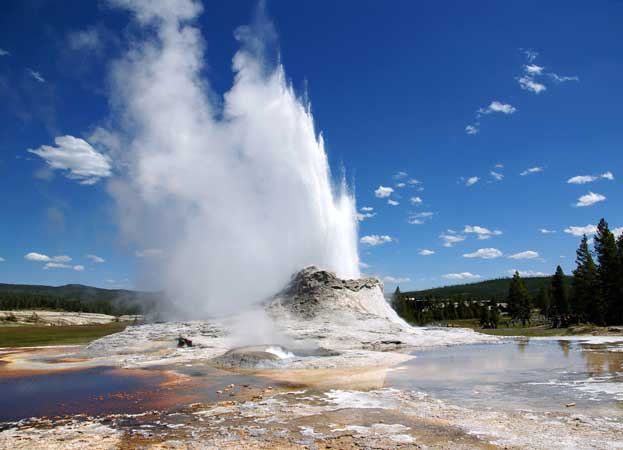World Heritage Yellowstone National Park, established in 1872, covers 9,000 km2 of a vast natural forest of the southern Rocky Mountains in the North American west. It boasts an impressive array of geothermal phenomena, with more than 3,000 geysers, lava formations, fumaroles, hot springs and waterfalls, lakes and canyons. It is equally known for its wildlife: grizzly bears, bison, wolves and wapiti, North American elk. The park is part of the most seismically active region of the Rocky Mountains, a volcanic 'hot spot'. The Yellowstone Plateau, now a forested area of 650,000 ha with an average elevation of 2,000 m, was formed out of the accumulation of rhyolite magma.

Continent: North America
Country: United States of America
Category: Natural
Criterion: (VII)(VIII) (IX) (X)
Date of Inscription: 1978
Rocky Mountains
The plateau is flanked on the north, east and south by mountains that rise to 4,000 m. Crustal uplifts 65 million years ago rose blocks of crust to form the southern Rocky Mountains. After that, volcanic outflows of andesitic composition were common to about 40 million years ago. Andesitic ashflows and mudflows of the Eocene age covered forests, which became petrified. Some 200 species of petrified plant have been found. A more recent period of rhyolitic volcanism began in the region about 2 million years ago, during which time thousands of cubic kilometres of rhyolitic magma filled immense chambers under the plateau and then erupted to the surface.Three cycles of eruption produced huge explosive outbursts of ash. The latest eruptive cycle formed a caldera 45 km wide and 75 km long, when the active magma chambers erupted and collapsed. The crystallizing magma is the source of heat for hydrothermal features such as geysers, hot springs, mud pots and fumaroles.
 |
| Yellowstone National Park |









No comments:
Post a Comment